After having lived in New Zealand for forty years, I thought it was about time to explore a part that I’d not seen before so when an opportunity came up to join a Probus trip, I jumped at it.
The entire journey was organised in advance which was very refreshing for me as I usually do all my planning myself. And so it was that the thirty-three members of the group made their own arrangements to meet at a motel in Christchurch and make their way to dinner at a nearby restaurant on the Monday evening.
It was a happy crowd and dinner was great. Everyone was ready for an early night so we dispersed to our accommodation, ready for the day ahead.
On Tuesday morning we were packed and ready to be taken by shuttle to the Railway Station to board the 8.15 am TranzAlpine train bound for Greymouth. We were travelling west across the Canterbury Plains, ascending through spectacular gorges and river valleys of the Waimakariri River towards the Southern Alps to the alpine village of Arthurs Pass. The train was very comfortable and we were able to relax and enjoy the scenery with an occasional visit to the restaurant car for sustenance. We were all very disappointed to be told that, for Health and Safety reasons, the Viewing Platform was out of bounds so we had to console ourselves with photos taken from the train windows. As a result, some of the photos show reflections, which is unfortunate.
We had a short break at Arthur’s Pass before descending through the Otira Tunnel to the West Coast of the South Island, through lush alpine beech rain forests to
Greymouth.
Many of us had come down to Christchurch by air the day before and had marvelled at the sight of the wonderful Southern Alps, covered in snow. The views from the train, however, were not as spectacular as there was only a very light dusting of snow on the occasional hill.
The weather had been fine for the whole journey and remained so for the rest of the day. A coach was waiting for us at the station to transport us to Dolomite Point near the little settlement of Punakaiki to see the spectacular Pancake Rocks.
 This was a fabulous drive along the edge of the Tasman Sea and we spent two hours at Punakaiki, marvelling at the amazing rock formations.
This was a fabulous drive along the edge of the Tasman Sea and we spent two hours at Punakaiki, marvelling at the amazing rock formations.
 Although the tide was high we missed seeing the blowholes but the short walkways through the limestone landscape of pancake-shaped rock formations and surge pools were spectacular. On the whole, the walkways were easy and suitable for wheelchair access, but there were one or two steep areas which had been carved through the rocks.
Although the tide was high we missed seeing the blowholes but the short walkways through the limestone landscape of pancake-shaped rock formations and surge pools were spectacular. On the whole, the walkways were easy and suitable for wheelchair access, but there were one or two steep areas which had been carved through the rocks.
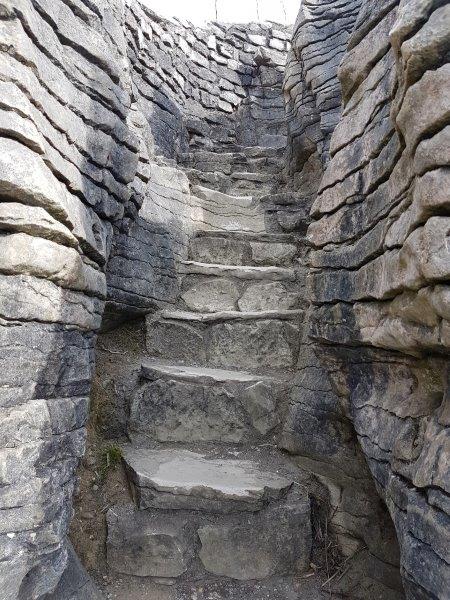 And the shops in the little settlement weren’t bad either with a few purchases made!
And the shops in the little settlement weren’t bad either with a few purchases made!
It had been a long day and the group headed back to Greymouth for a short rest in our rooms before enjoying an early dinner and an almost equally early night.
Wednesday started fairly early and the whole group headed off for a visit to Shantytown, just 10 kms south of Greymouth.
Before we started to explore, we all took a trip on the Infants Creek railway line which follows an old bush tramline that was used to get logs to a timber mill. The line travels
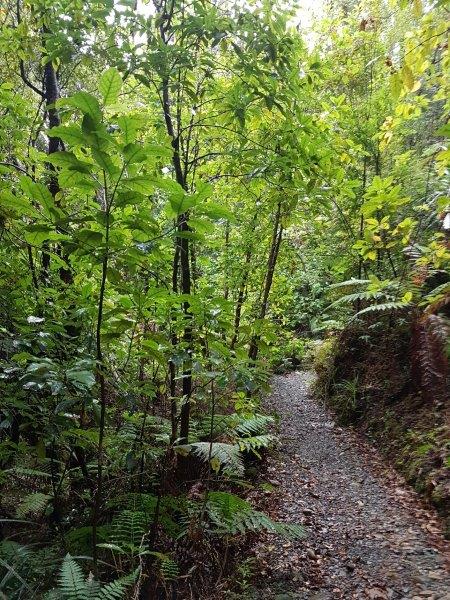 through native rain-forest and old gold workings. While I was waiting for the train, I took a quick walk up part of the Rotary Gold Fields Walkway through the rain forest. This was symbolic in a way because it was the Plimmerton Rotary Club that inaugurated the Whitby Probus Club back in the day and supported it as it grew. It is a very successful Probus Club and now has a waiting list that many other organisations would envy.
through native rain-forest and old gold workings. While I was waiting for the train, I took a quick walk up part of the Rotary Gold Fields Walkway through the rain forest. This was symbolic in a way because it was the Plimmerton Rotary Club that inaugurated the Whitby Probus Club back in the day and supported it as it grew. It is a very successful Probus Club and now has a waiting list that many other organisations would envy.
The train was an experience that took us all back in time. The first class carriage had windows but the second class carriage was open on one side which brought the rain forest very close. The main photographer on our trip was rarely in photos himself so I managed to take one of the train with him (albeit from behind!) taking one of his many photos.
Steam driven winches were introduced during the 1890s to haul the logs to the tramline. Before this, horses and bullocks had been used to drag the logs, but deep mud and difficult terrain meant that it was hard work for the animals who could often work for only four hours a day.
Until chainsaws became common in the 1950s, trees were felled using axes and cross-cut saws. The work was very dangerous and there were many accidents. Boys as young as 14 were employed as whistle boys. They were an important link between the Bushmen, who were felling trees some distance away from the winch, and the Winch Driver. Young Alan Brereton only worked as a Whistle Boy for a month or so before he was killed when the end of the sapling he was standing on threw him forwards onto the ground where he was crushed by the logs passing on top of him. The logs were enormous and it was hardly surprising that accidents happened.
Somewhat sobered by the information we’d gleaned on our train journey, we moved on to the gold panning. Gold is highly valued because of its unique blends of chemical and physical characteristics. It never rusts or tarnishes and is the most easily worked metal known. Gold was discovered around 5,000 BC and since then has been valued for ornaments, jewellery and currency. It is 19.3 times heavier than water and a cubic metre weighs 19.3 tonnes.
Most of the group tried their hand at panning for gold, everyone getting a lesson on how to swill water through the river stones until the gold sank to the bottom and became the only thing left in the panning dish. Here, it was transferred into a tiny vial to be taken away and kept as a souvenir, undoubtedly in insufficient quantities to be sold at the Diamond Gully Trading Post!
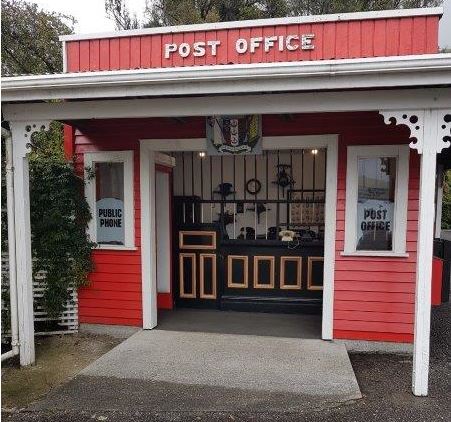 There was still time to stroll around the town, checking out the museum, the church and the old shops and stores. And what a feast of memorabilia awaited us!
There was still time to stroll around the town, checking out the museum, the church and the old shops and stores. And what a feast of memorabilia awaited us!
 Everything appeared to have been restored in its original form. There was the Post Office and the General Store.
Everything appeared to have been restored in its original form. There was the Post Office and the General Store.
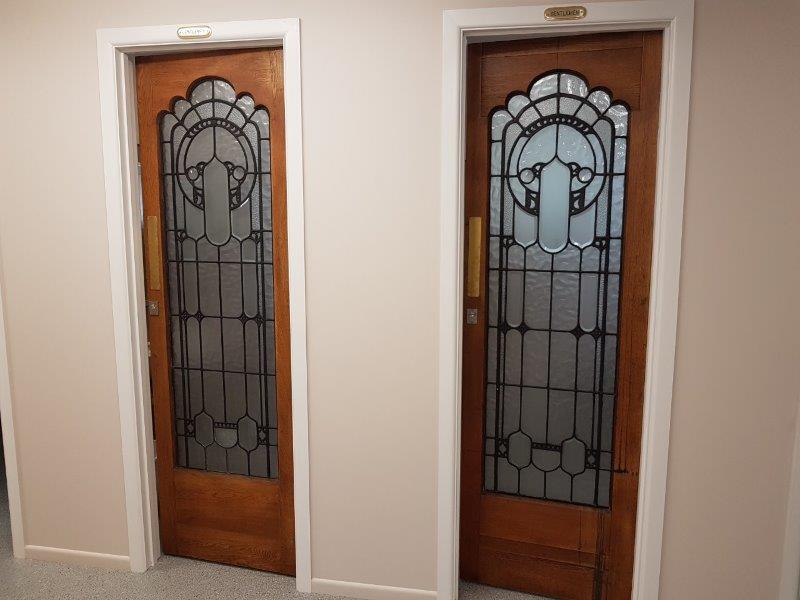 And, in case we needed to make a visit before the return journey, the toilets beckoned, clearly a modern addition to the privations that would have been experienced over a century ago. These two were for the ‘Gentlemen’. Those for the ‘Ladies’ were just as attractive.
And, in case we needed to make a visit before the return journey, the toilets beckoned, clearly a modern addition to the privations that would have been experienced over a century ago. These two were for the ‘Gentlemen’. Those for the ‘Ladies’ were just as attractive.
And so it was time to board our big bus and return to Greymouth where twenty of the group left us to travel back to Christchurch on the TranzAlpine and other adventures in the South Island while the remaining thirteen of us boarded a minibus driven by Ged of Richies, which would be our transport for the remainder of our journey. Ged lives in Westport and is a frequent traveller on the West Coast and a mine of information. He worked 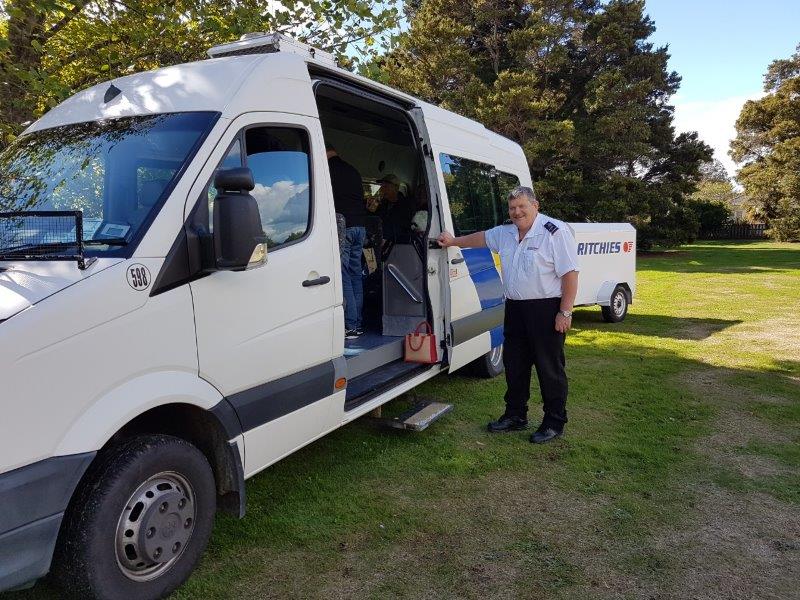 with one of the mining companies at one time and one of his leisure pursuits is playing the big drum in a local pipe band while his partner, Mari, plays the bagpipes!
with one of the mining companies at one time and one of his leisure pursuits is playing the big drum in a local pipe band while his partner, Mari, plays the bagpipes!
The treat for the rest of the day was to drive inland to visit Blackball, a small town approximately 29km from Greymouth and situated at the foot of the Paparoa ranges. The town was named after the Black Ball Shipping Line which leased land in the area to mine for coal. Miners and their families came from many corners of the world to work in the Blackball mine. They brought with them traditions of mutual support and stubborn determination, built up in their dark, dangerous, underground workplaces. About half of the workforce was from the North of England coalfields in Durham, Yorkshire and Lancashire with a few from Cornwall. Others came from lowland Scotland and Ireland, often migrating from Australia. They found a climate that was cold and damp in winter and working conditions were more primitive and dangerous than most were used to. The thought did cross my mind that this was an era in New Zealand history when I, for one, as a woman, would not have sought equal rights!
The miners paid part of their wages into an accident fund and employed the town’s only doctor. To overcome their isolation they also held large social events. The annual picnic, with a brass band and chartered railway train, was the highlight of the year for the children.
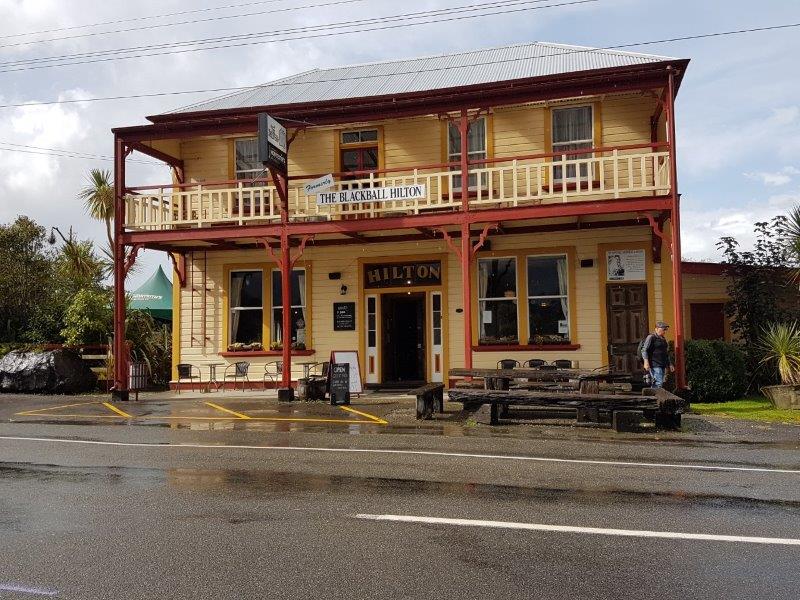 We were just in time to stop for lunch at The Blackball Hilton which offers a variety of accommodation as well as meals. We enjoyed a variety of goodies before making our way to ‘Blackball Salami’ which was established in 1992 and now sends its award-winning meats to large supermarkets throughout New Zealand. One of the current owners, Debbie Russ, offered us tastings of the many delicacies on offer and assured us that our goodies wouldn’t need refrigerating until we opened the package. Thus assured, many of us left with some tasty treats to enjoy when we got home.
We were just in time to stop for lunch at The Blackball Hilton which offers a variety of accommodation as well as meals. We enjoyed a variety of goodies before making our way to ‘Blackball Salami’ which was established in 1992 and now sends its award-winning meats to large supermarkets throughout New Zealand. One of the current owners, Debbie Russ, offered us tastings of the many delicacies on offer and assured us that our goodies wouldn’t need refrigerating until we opened the package. Thus assured, many of us left with some tasty treats to enjoy when we got home.
With our suitcases trailing behind the minibus, we were all set to make our way to Westport for the next two nights but not before we visited the Seal Colony at Tauranga Bay, close to Cape Foulwind.
Wall Island is just off the coast here. Despite its small size, Wall Island is one of the most important seabird colonies on the West Coast. Six species breed there. Most abundant are the Fairy Prions, small, bluish coloured petrels that breed on several islands around much of New Zealand. Before the arrival of rats, stoats, cats and other introduced mammals to New Zealand, Fairy Prions and other petrels were much more numerous. I went with a group to Mana Island in 2014 and witnessed the release of Fairy Prions from the South Island for the first time. A small colony will be establishing itself there where the island is free of introduced rats and stoats.
In amongst the Prion burrows are over two hundred Sooty Shearwater burrows with a few Blue Penguins on some lower slopes. (I confess that I plagiarised this photo because it’s so cute!)
From here it was only a short distance to our accommodation in Westport. It was another long day with a feast of things to see and do so we all went out to dinner at Portside Bistro at 13 Cobden Street, and back for an early night.
Thursday dawned a little gloomy after torrential rain in the night so our leader decided that we’d change the day around and visit the Coaltown Museum in Westport first in the hope that the rain would stop and we could explore outdoor things later in the day.
The Museum is housed in the rather lovely art deco Municipal Building.
Westport is a town built on coal extraction from wild and remote places like Denniston, Stockton and Millerton where daily life was a struggle and comfort a luxury. Some of the major exhibits include a huge ‘Q’ wagon. Wagons like this one were used on the world-famous Denniston Incline.
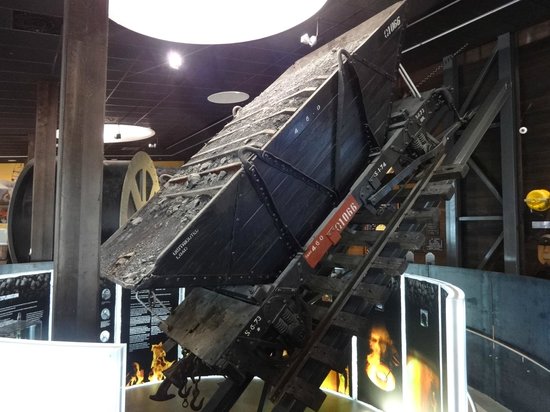 This large 6-ton coal wagon used a self-acting ropeway to lower 12.5 ton gross laden weight to New Zealand Railways’ coal wagons waiting at the bottom. At its steepest, it ran at a 45˚ angle and was slowed by a 20-ton brake drum as it raced down the Incline.
This large 6-ton coal wagon used a self-acting ropeway to lower 12.5 ton gross laden weight to New Zealand Railways’ coal wagons waiting at the bottom. At its steepest, it ran at a 45˚ angle and was slowed by a 20-ton brake drum as it raced down the Incline.
We were able to watch several videos which explained life in the coal mines and the privations that the miners and their families experienced. We learnt how coal is formed and the carbon dioxide cycle that forms the coal deep underground over millions of years. We learnt that coal mined from the Denniston-Stockton Plateau was formed from plants growing on raised areas near swamps. Lush stands of vegetation flourished and, over a long time, the vegetation decayed into peat deposits. The peat later became covered by thick layers of sand and mud and, over millions of years, became deeply buried. During this time, heat and pressure gradually changed the peat into bituminous coal.
Bituminous coal is crucial for steel production which is why the coal from this area is so valuable. Although it was supplanted by diesel and petrol as a transport fuel during the 20th century, coal remains a product with many applications and is still much in demand. According to the World Coal Association, coal combustion generated 41% of the world’s electricity in 2012.
Leaving the museum and all the information it contained, we drove to Stockton to visit the topmost point of the mine itself but were soon lost in the low clouds and could barely see the road ahead. Once at the top of the hill we saw a diagram that shows, with the red dot, where we were standing. It also showed the age-old division between employer and employee. Directors’ Quarters served as the accommodation base for the directors of the mine when visiting their investment. The house comprised several bedrooms, a living room and glassed-in veranda, a kitchen, running hot and cold water and a bathroom. For many of the Denniston miner’s homes, however, this one would have represented spacious luxury.
Coming back to sea level again we went further north to Granity and Ngakawau we could see the wagons coming down from the inhospitable area at the top of the hill where open-cast mining is still carried out at the huge Stockton mine.
When the wagons reach the bottom, the coal is mixed, depending on what grade is required, and loaded onto waiting trains for transport to Lyttleton for export.
Coming back into Westport itself, there was still time for a gentle wander around the town where some members visited the West Coast Brewery and sampled a few of their beers.
And then it was time for dinner at a splendid restaurant called Johnny's Restaurant run by John Lennon and his wife where the service was impeccable and the food superb. This restaurant is definitely worth a mention. Janice and John are the owners and nothing was too much trouble for them. Their contact number is 03 789 6474 if you're ever staying overnight in Westport!
Friday morning dawned fine again (who says it always rains on the West Coast) and an early morning walk was just what the doctor ordered after having spent a lot of time sitting down and being transported from place to place.
The streets of Westport are very wide and there’s hardly any traffic, especially in the early morning. The pavements are also very wide and flat and clean and the locals who passed by were invariably friendly and welcoming with a ready smile and a greeting.
We set off on our journey to Nelson and the end of our five-day holiday with mixed feelings. It would have been great to have lingered as there was so much to see and do but normality awaited us and we knew it would be good to be home again.
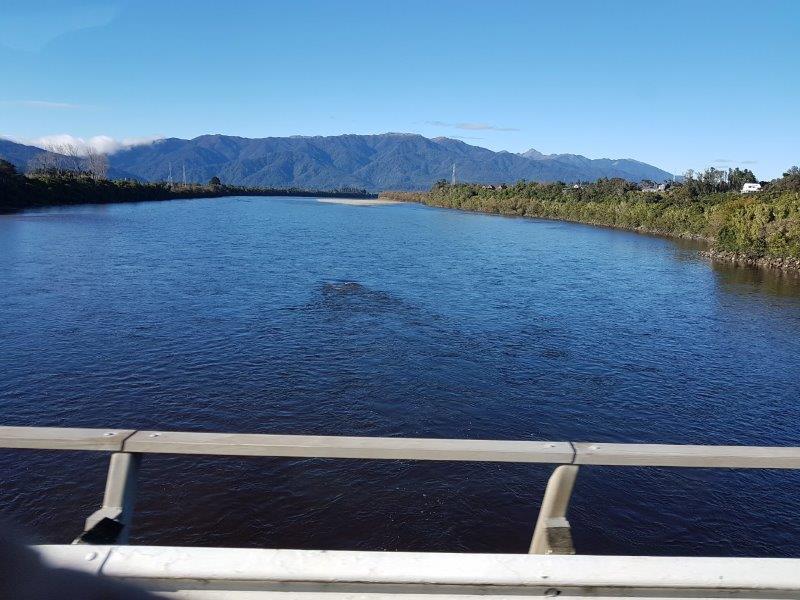 What a beautiful journey it was on a glorious day, through the Buller Gorge with Ged driving us and telling us little bits of history along the way.
What a beautiful journey it was on a glorious day, through the Buller Gorge with Ged driving us and telling us little bits of history along the way.
We crossed the bridge over the Buller River and made our way up the winding southern bank and proceeded to pass all manner of beautiful landscapes as the river wound its way through the gorge.
The West Coast is fertile cattle country and we certainly saw some very large herds. Over four hundred farmer shareholders supply milk to the Westland Co-operative Dairy Company, an independent co-operative dairy. Milk is sourced from farms as far north as Karamea and as far south as Haast and from farms throughout Canterbury. Their major processing factory is located in Hokitika with its main warehouse and milk concentration plant near the small town of Rolleston.
Despite this being cattle country, there were actually quite a few paddocks with sheep and we also saw some herds of deer which I didn't catch on camera unfortunately.
It was lovely to see some autumn colours, even though we were really too early to see the full glory of the changing seasons.
And then we arrived in Murchison where we enjoyed a lovely morning tea break and stocked up with some lunch to eat closer to lunchtime.
As we approached Richmond, we passed through Wakefield and, although Margaret was no longer with our group, having returned to Christchurch on Wednesday, we decided that this scenic reserve was an ideal place to stop and enjoy our picnics.
Our final stop was at the WOW Museum in Nelson where we feasted our eyes on a large assortment of vintage cars.
And an equally large assortment of outfits created by people who had been prize winners in the WOW Show in Wellington in 2018.
Sadly it was finally time to go our separate ways and Ged dropped us all at Nelson Airport. Some of us were flying to Wellington, some were being picked up by friends and relatives and a few were hiring cars to continue their South Island adventures.
It was a very special holiday and I think I can safely say that everyone had a seriously good time and enjoyed lots of fun and laughter.
